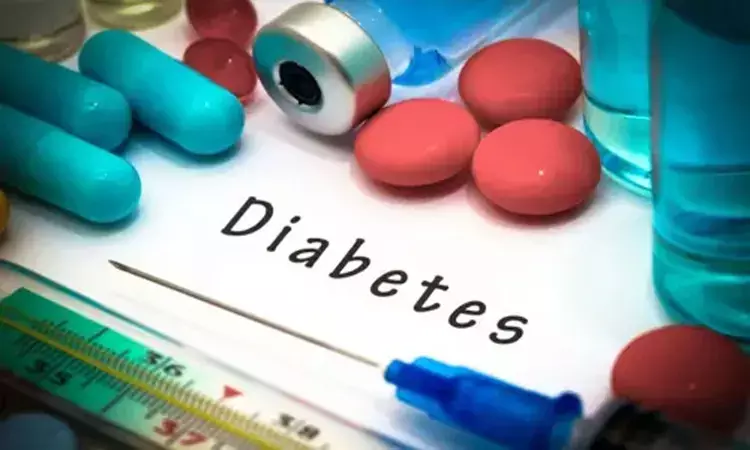- Home
- Medical news & Guidelines
- Anesthesiology
- Cardiology and CTVS
- Critical Care
- Dentistry
- Dermatology
- Diabetes and Endocrinology
- ENT
- Gastroenterology
- Medicine
- Nephrology
- Neurology
- Obstretics-Gynaecology
- Oncology
- Ophthalmology
- Orthopaedics
- Pediatrics-Neonatology
- Psychiatry
- Pulmonology
- Radiology
- Surgery
- Urology
- Laboratory Medicine
- Diet
- Nursing
- Paramedical
- Physiotherapy
- Health news
- Fact Check
- Bone Health Fact Check
- Brain Health Fact Check
- Cancer Related Fact Check
- Child Care Fact Check
- Dental and oral health fact check
- Diabetes and metabolic health fact check
- Diet and Nutrition Fact Check
- Eye and ENT Care Fact Check
- Fitness fact check
- Gut health fact check
- Heart health fact check
- Kidney health fact check
- Medical education fact check
- Men's health fact check
- Respiratory fact check
- Skin and hair care fact check
- Vaccine and Immunization fact check
- Women's health fact check
- AYUSH
- State News
- Andaman and Nicobar Islands
- Andhra Pradesh
- Arunachal Pradesh
- Assam
- Bihar
- Chandigarh
- Chattisgarh
- Dadra and Nagar Haveli
- Daman and Diu
- Delhi
- Goa
- Gujarat
- Haryana
- Himachal Pradesh
- Jammu & Kashmir
- Jharkhand
- Karnataka
- Kerala
- Ladakh
- Lakshadweep
- Madhya Pradesh
- Maharashtra
- Manipur
- Meghalaya
- Mizoram
- Nagaland
- Odisha
- Puducherry
- Punjab
- Rajasthan
- Sikkim
- Tamil Nadu
- Telangana
- Tripura
- Uttar Pradesh
- Uttrakhand
- West Bengal
- Medical Education
- Industry
Valproate has highest diabetes risk among anticonvulsant mood stabilizers: JAMA

USA: Valproate is linked to the highest risk of acquiring type 2 diabetes (T2D) in adults, according to recent cohort research published in the Journal of the American Medical Association.
Treatment with anticonvulsant mood stabilizers is linked to an increased risk of weight gain, but less is known regarding the risk of acquiring T2D. Jenny W. Sun and colleagues conducted this investigation to assess the comparative safety of anticonvulsant mood stabilizers on the risk of T2D in adults and children using an emulation of a target trial.
This observational cohort research employed IBM Market Scan data from 2010 to 2019, with a 5-year follow-up period. Children (aged 10-19 years) and adults (aged 20-65 years) were included in the countrywide sample of commercially insured patients who began anticonvulsant mood stabilizer therapy. The data was examined from August 2020 to May 2021. This research enrolled patients who had begun and continued to take carbamazepine, oxcarbazepine, lamotrigine, or valproate. The major consequence was the onset of T2D during the follow-up period. The researchers utilized weighted pooled logistic regression to determine the relationship between starting and continuing carbamazepine, oxcarbazepine, lamotrigine, or valproate with the likelihood of developing T2D. To account for confounding and loss to follow-up caused by observed baseline and time-varying factors, inverse probability weights were applied.
The findings of this study were as follows:
1. The study comprised 274 206 adults and 74 005 children who had started using an anticonvulsant mood stabilizer.
2. In adults, starting valproate was associated with a higher chance of developing T2D than starting lamotrigine.
3. When compared to starting lamotrigine, the number of patients needed to harm was 87 when starting valproate for 1 patient to develop T2D within 5 years.
4. When analyzing the relationship of treatment continuation, point estimates were comparable.
5. When carbamazepine and oxcarbazepine were compared to lamotrigine, the estimated relationship was lower and more variable.
6. RDs were substantially smaller and more varied in children.
In conclusion, these data suggest that, at the population level, the decision of which anticonvulsant mood stabilizer to begin may have significant links with the occurrence of T2D. Patients and doctors worried about the possible metabolic side effects of therapy may consider starting with lamotrigine, which has been linked to the lowest risk of T2D.
Reference: Sun JW, Young JG, Sarvet AL, et al. Comparison of Rates of Type 2 Diabetes in Adults and Children Treated With Anticonvulsant Mood Stabilizers. JAMA Netw Open. 2022;5(4):e226484. doi:10.1001/jamanetworkopen.2022.6484
Medical Dialogues consists of a team of passionate medical/scientific writers, led by doctors and healthcare researchers. Our team efforts to bring you updated and timely news about the important happenings of the medical and healthcare sector. Our editorial team can be reached at editorial@medicaldialogues.in.
Dr Kamal Kant Kohli-MBBS, DTCD- a chest specialist with more than 30 years of practice and a flair for writing clinical articles, Dr Kamal Kant Kohli joined Medical Dialogues as a Chief Editor of Medical News. Besides writing articles, as an editor, he proofreads and verifies all the medical content published on Medical Dialogues including those coming from journals, studies,medical conferences,guidelines etc. Email: drkohli@medicaldialogues.in. Contact no. 011-43720751


